Scientists Are Studying Ghost Forests Swallowed by Saltwater. You Can Help.

After driving for hours into the sun, Marcelo Ardón pulled off onto a bumpy gravel road leading into a coastal forest where rising sea levels are visibly changing the landscape. The flies swarmed as he stepped out of the truck to begin trekking on a thick, overgrown path.
Dodging spiderwebs, Ardón stepped off the trail into in a mucky area where he and his research team have placed equipment that monitors the elevation of the soil, helping them predict the fate of this wetland forest, located in the Palmetto-Peartree Preserve on the Albemarle Sound of North Carolina.
“We are monitoring whether the soil is going up or going down – that will tell us if the wetland is going to be able to keep up with sea-level rise, or if it’s going to drown,” said Ardón, an associate professor of forestry and environmental resources at North Carolina State University.
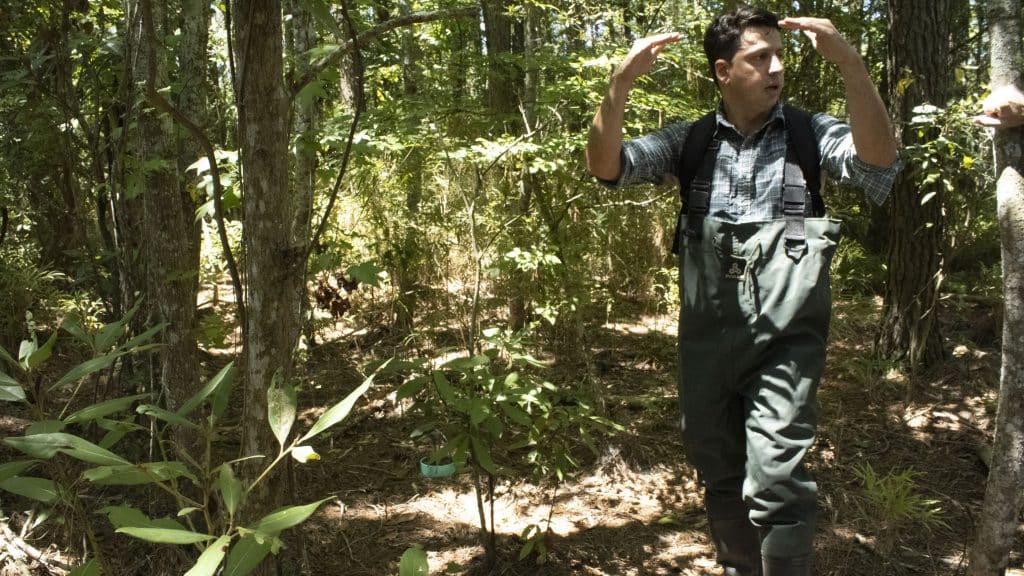
Ardón has already witnessed changes in this forest since he started studying it about 15 years ago. At that time, Ardón just wore regular boots. He now wears rubber chest waders because the water has gotten so high.
“I was seeing the forest change right before my eyes,” Ardón said. “We were seeing all the trees dying. The canopy was opening up. All the vegetation in the understory was changing; different, more water-loving vegetation was coming in. That’s why I still work in this site and why we started looking at ghost forests more broadly.”
Ardón is studying the drivers and downstream impacts of the transition of wetland forests into so-called ghost forests.
“So we’ve been studying: what are the drivers of these changes?” he said. “What are the consequences? Over what time scales do these changes seem to happen?”
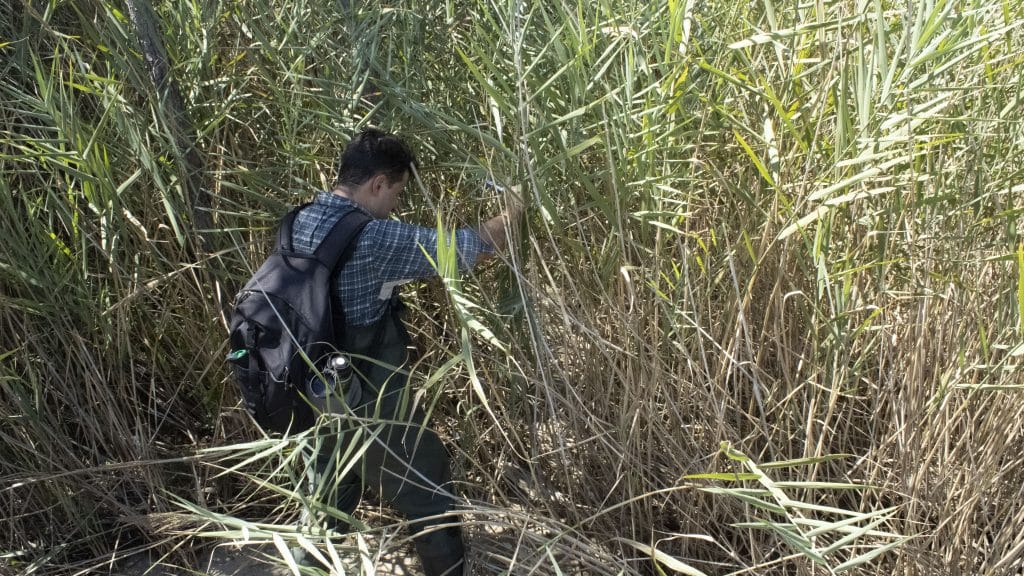
When the Water Rises Too Fast
Follow the researcher’s trail to its end, and you reach the Albemarle Sound. Dead tree stumps and snags spot the shoreline.
“This is what we call a ghost forest,” said Ardón, after pushing through the shoreline vegetation, and wading out to stand, waist-deep, among the snags. “This area used to look like the forest that we just walked through earlier.”
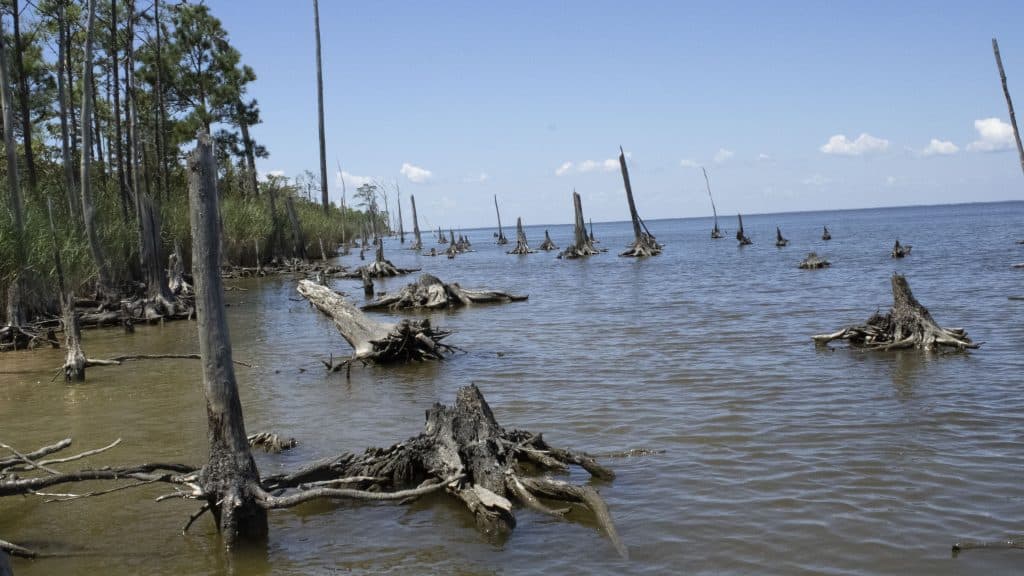
You get a graveyard of dead stumps when the water inundates the land too quickly, Ardón explained, and the marsh vegetation can’t keep up. In previous work by his lab, researchers have tracked the saltwater threshold that different plants can take.
“So what’s happened here is we’re right next to the Albemarle Sound, and the water has been rising faster than this system has had time to migrate,” he said.
Ardón pointed to the base of a nearby tree. He would have been standing level with the tree if the forest were intact. Instead, he was waist-deep in water. That soil, and the carbon-based organic matter in it, has been lost.
“So we’ve lost that amount of soil and that amount of carbon,” he said. “We’ve lost it. Some of it might have gone down and it’s buried in the bottom of the sound and some of it might be up in the atmosphere.”
While he said there has been a “dance” between forested wetlands and marsh in the past, the problem now is how fast it’s happening.
“So the sea levels are rising, and there are more storms; there are more droughts – all of these things stress out the trees and the vegetation,” Ardón said.
Trees, in Death, Still Transport Gases
Ardón placed his hand on the trunk of one of the dead trees – a trunk that, though dead, can still transport gases through the remaining vascular system inside.
In a recent study, Ardón and his team looked at the role the trees play in releasing or keeping gases in the soil in ghost forests.
“We’re seeing now that they function as filtered straws, because they facilitate the movement of some gases, but they also help filter out some, too,” Ardón said. “They help filter out methane, which is a very potent greenhouse gas.”
He waded out to the edge of where the last stump stood in the sound. He said that, around 1990, the shore was about 80 feet from where it is now.
“You can see the change on satellite images if you go on Google Earth, and use the time-lapse tool to put a pin on where the shore is right now,” he said. “Then you move the clock back and it’ll show you images that go back to 1987, 1990. You can see that change yourself.”
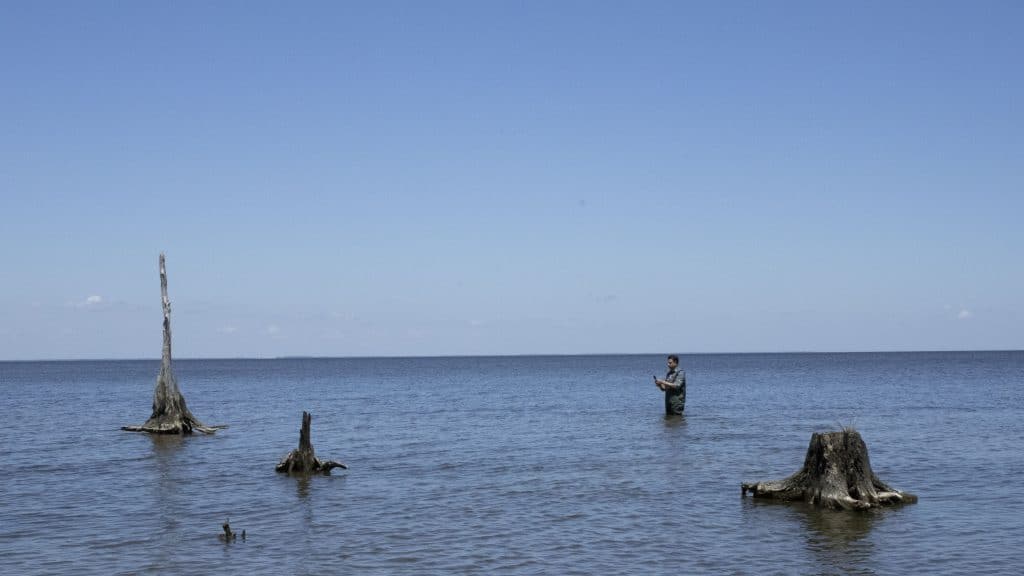
Volunteers Helping Track Ghost Forest Transitions
Back on land, Ardón walked down a boardwalk along the Scuppernong River. Inside the Pocosin Lakes National Wildlife Refuge in Columbia, North Carolina, the boardwalk meanders by native flowers in bloom and knobby-kneed cypress trees.
Ardón stopped at a sign along the boardwalk, overlooking a forest beyond. He placed his phone on a small ledge on the sign, and snapped a photo. The site is part of a citizen science project Ardón has launched to track forests in transition.

Volunteers can take photos at the sites, and email them to NC State researchers. The idea is to use the photos to track the forests over time.
“I like studying ghost forests because they’re a very clear indication that climate change is here, that climate change is happening, and that it’s here and now,” Ardón said.
In addition to getting citizen scientists engaged in his work, Ardón has also been investigating solutions to sea-level rise, including a wetland restoration effort.
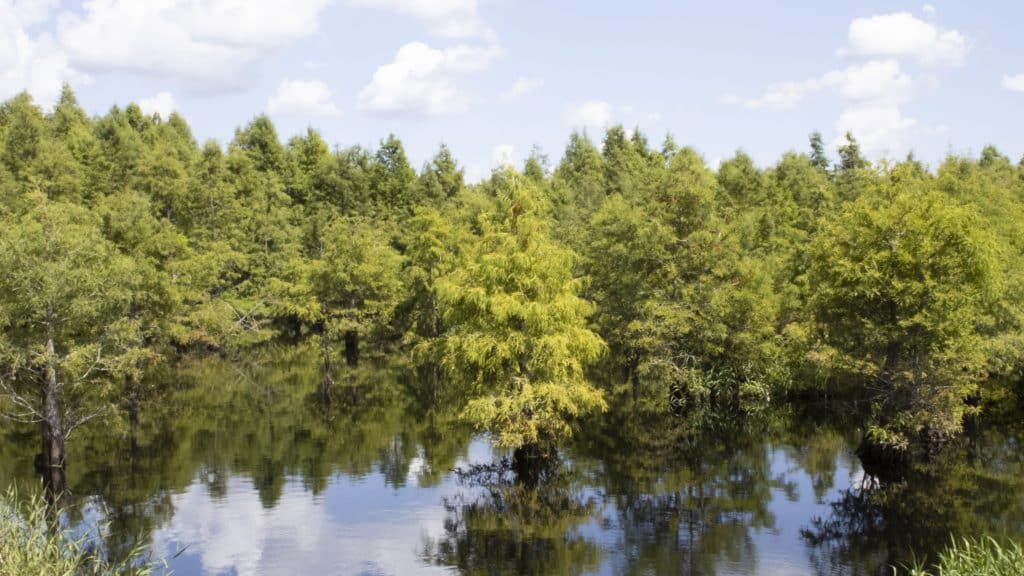
“These systems have been changing a lot in the time that I’ve been studying them and I know they’re going to continue to change in the time that my kids grow up,” he said. “But I am certain that our research can help decrease the uncertainties that land managers are already facing.”
To read a Q&A with Ardón about the citizen science project, click here. To see the photos gathered so far, click here.
- Categories: